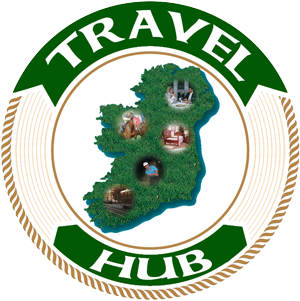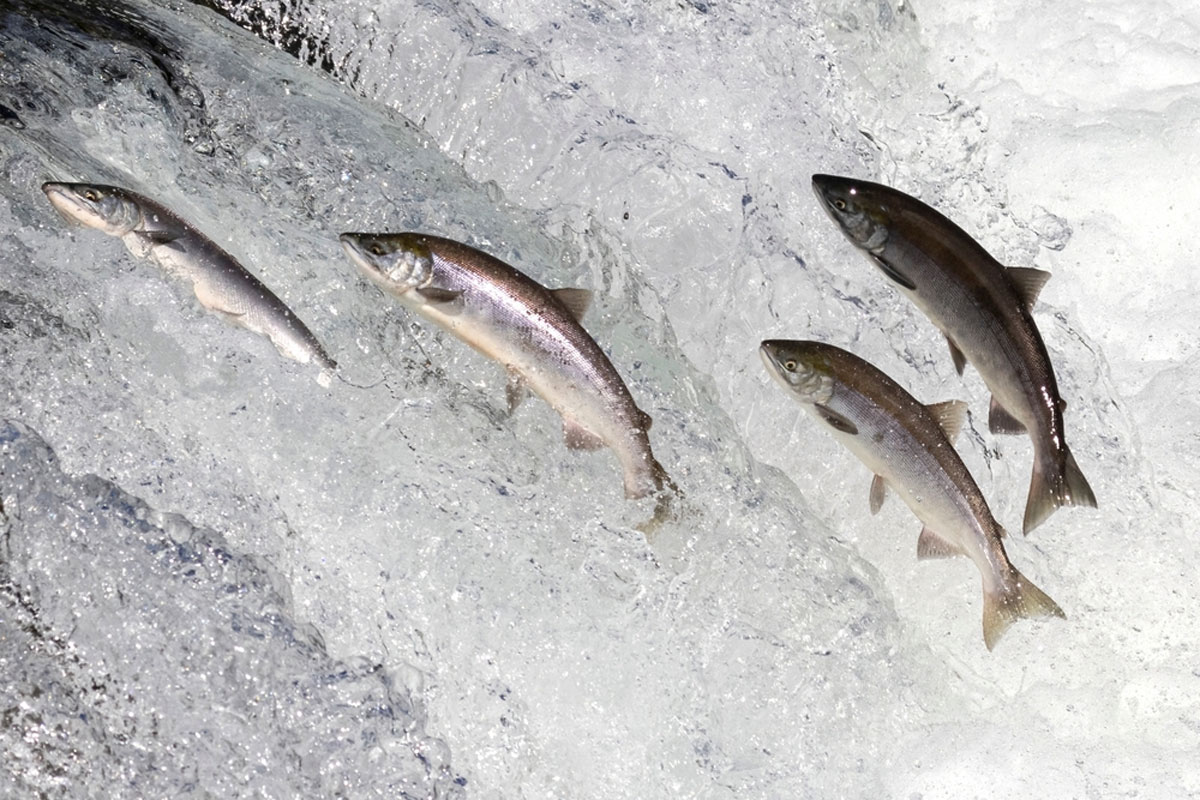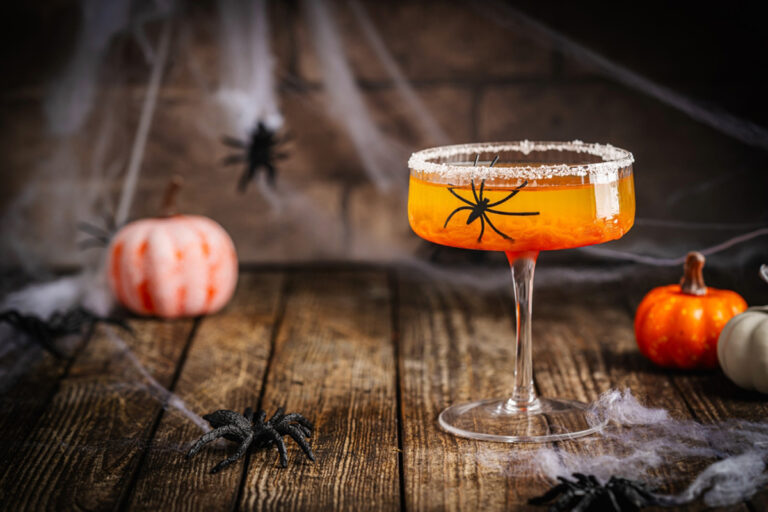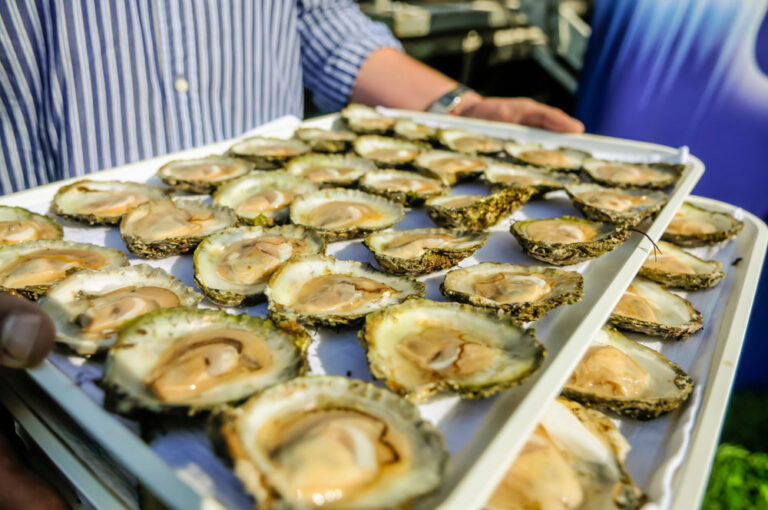Salmon as a Culinary Icon
Salmon holds a revered place in Irish history, mythology, and culinary traditions. Since ancient times, the salmon has been an integral part of Irish culture, symbolizing not only abundance and vitality but also serving as a connection to the natural world. Its significance transcends mere sustenance, encompassing spiritual and cultural dimensions that have shaped the Irish identity for centuries.
In Irish mythology and folklore, the salmon is often depicted as a creature of wisdom and knowledge. The most famous legend surrounding salmon in Ireland is the “Salmon of Knowledge” (An Bradán Feasa), which features prominently in the tale of Fionn mac Cumhaill (Finn McCool). According to legend, whoever consumed the flesh of the Salmon of Knowledge would gain all the wisdom of the world. This myth underscores the symbolic significance of salmon as a source of enlightenment and spiritual nourishment in Irish culture.
Throughout history, the salmon’s seasonal migrations upstream to spawn have been celebrated as a natural spectacle, inspiring awe and reverence among the Irish people. The annual return of the salmon represents the cyclical rhythm of life, renewal, and the interconnectedness of humans and nature. In folklore, the salmon’s journey is often associated with themes of perseverance, transformation, and the eternal cycle of birth, death, and rebirth.
Beyond its cultural symbolism, salmon is prized for its exceptional nutritional value and versatility in the Irish diet. Rich in omega-3 fatty acids, protein, vitamins, and minerals, salmon provides essential nutrients that support overall health and well-being. Its inclusion in traditional Irish cuisine reflects the practical wisdom of generations past, who recognized the nourishing benefits of this prized fish.
Salmon is prepared and enjoyed in various ways in Irish cuisine, from simple grilled fillets to elaborate smoked salmon dishes. Whether served fresh from the river or smoked to perfection, salmon is a staple protein that features prominently in traditional Irish recipes, ranging from hearty stews and savory pies to elegant seafood platters. Its versatility makes it suitable for both everyday meals and special occasions, ensuring its enduring popularity among Irish households.
In summary, the historical, cultural, and nutritional significance of salmon in Ireland underscores its status as a culinary icon deeply ingrained in the fabric of Irish society. From myth and folklore to the dinner table, salmon continues to captivate hearts and palates, embodying the enduring connection between the Irish people and their natural surroundings.
Salmon Fishing Traditions
Salmon fishing in Ireland has a storied history that stretches back thousands of years. Archaeological evidence suggests that indigenous peoples in Ireland were harvesting salmon as early as the Mesolithic period, utilizing primitive tools and techniques to catch this prized fish from rivers, streams, and coastal waters. Over the centuries, salmon fishing evolved from a subsistence activity to a vital economic and cultural pursuit, shaping the lives and livelihoods of generations of Irish people.
Ancient Celtic communities revered the salmon as a symbol of wisdom, strength, and abundance, attributing mystical qualities to the fish and incorporating it into their religious rituals and ceremonies. The salmon’s migratory journey upstream to spawn was regarded as a sacred act of renewal and regeneration, symbolizing the eternal cycle of life and death.
Traditional salmon fishing in Ireland encompasses a variety of techniques, each tailored to the unique characteristics of the local environment and the behavior of the fish. One of the oldest methods is net fishing, which involves setting nets across rivers or estuaries to intercept migrating salmon. These nets, often made from natural fibers such as hemp or linen, were meticulously crafted by skilled artisans and deployed with precision to maximize catch rates while minimizing environmental impact.
Angling, or fishing with a rod and line, is another popular method employed by Irish fishermen to target salmon. Anglers use specialized equipment, including lightweight rods, reels, and artificial lures or flies, to entice salmon into striking. This method requires patience, skill, and intimate knowledge of the river’s currents and topography, making it a cherished pastime for many anglers.
In addition to nets and angling, traditional fish traps known as weirs or fish gates have been used to capture salmon in rivers and streams. These structures consist of wooden or stone barriers that direct the flow of water, guiding salmon into holding areas where they can be easily harvested. Although less common today due to conservation concerns, fish traps played a significant role in historical salmon fisheries and are still found in some parts of Ireland.
Salmon fishing has been a cornerstone of community life in Ireland for centuries, fostering close-knit ties among fishing families and shaping the social fabric of rural villages and coastal towns. Along the banks of Ireland’s rivers and estuaries, thriving fishing communities have developed unique traditions, customs, and rituals that reflect their deep connection to the land and sea.
These communities often rely on salmon fishing as a primary source of income and sustenance, with entire families participating in the seasonal harvest. From the communal gathering of nets to the shared celebration of a bountiful catch, salmon fishing rituals strengthen bonds of kinship and solidarity, reinforcing a sense of belonging and identity among community members.
Furthermore, salmon fishing communities serve as custodians of local ecosystems, advocating for sustainable management practices and stewardship of natural resources. Through collaboration with government agencies, conservation organizations, and scientific researchers, these communities work to preserve and protect salmon habitats for future generations, ensuring the continued viability of this iconic species.
In summary, the rich tapestry of salmon fishing traditions in Ireland reflects not only the ingenuity and resilience of its people but also their profound respect for the natural world. As custodians of an ancient heritage, Irish fishermen and fishing communities embody the enduring spirit of stewardship and tradition, safeguarding the legacy of salmon fishing for years to come.
Salmon in Irish Gastronomy
Salmon holds a revered place in Irish gastronomy, with a myriad of preparations showcasing its versatility and flavor. One of the most beloved preparations is smoked salmon, a delicacy that has been enjoyed in Ireland for centuries. Traditionally, salmon is cured with salt and sometimes sugar, then cold-smoked over wood chips to impart a rich, smoky flavor. The result is a tender, melt-in-your-mouth delicacy that can be enjoyed on its own or incorporated into various dishes.
In addition to smoked salmon, Irish cuisine features a wide range of preparations for fresh salmon, including grilling, baking, poaching, and pan-searing. Poached salmon fillets, for example, are often served with a creamy dill sauce and accompanied by boiled potatoes and seasonal vegetables, creating a light and elegant meal that showcases the fish’s natural flavors.
Salmon is a staple ingredient in many traditional Irish recipes, adding depth and richness to classic dishes. One such dish is salmon boxty, a savory pancake made from grated potatoes, flour, and buttermilk, filled with a mixture of flaked salmon, herbs, and creamy sauce. This hearty and satisfying dish is often served as a main course or as part of a traditional Irish breakfast.
Salmon chowder is another beloved recipe that combines the creamy richness of dairy with the delicate flavor of salmon. Made with salmon, potatoes, onions, celery, and a creamy broth, this comforting soup is a favorite during the colder months and is often served with crusty bread for dipping.
Salmon colcannon is a variation of the classic Irish dish colcannon, which typically consists of mashed potatoes mixed with cabbage or kale. In this variation, flaked salmon is added to the mashed potatoes along with cooked cabbage or kale, creating a hearty and flavorful dish that is perfect for a cozy family dinner.
Salmon plays a central role in many celebratory meals and festive gatherings in Ireland, symbolizing abundance, prosperity, and hospitality. It is often featured as a centerpiece dish at weddings, where it is served in various forms, from smoked salmon canapés during cocktail hour to poached salmon fillets with hollandaise sauce as the main course.
During holidays such as Christmas and Easter, salmon is a popular choice for festive feasts, with families gathering to enjoy elaborate meals featuring the finest ingredients. Whole roasted salmon stuffed with herbs and citrus, glazed with honey and mustard, or simply served with a squeeze of lemon, takes center stage on the holiday table, surrounded by an array of seasonal side dishes and accompaniments.
In addition to weddings and holidays, salmon is also an important component of religious feasts and celebrations in Ireland. During Lent, when meat is traditionally abstained from, salmon provides a nutritious and satisfying alternative, with dishes such as smoked salmon salads, salmon pasta dishes, and salmon quiches featuring prominently in Lenten menus.
In summary, salmon holds a cherished place in Irish gastronomy, with its rich flavor and versatility making it a beloved ingredient in a wide range of dishes. Whether smoked, poached, grilled, or baked, salmon adds depth and richness to traditional Irish recipes, while its presence at celebratory meals and festive gatherings reinforces its status as a symbol of abundance and hospitality in Irish culture.
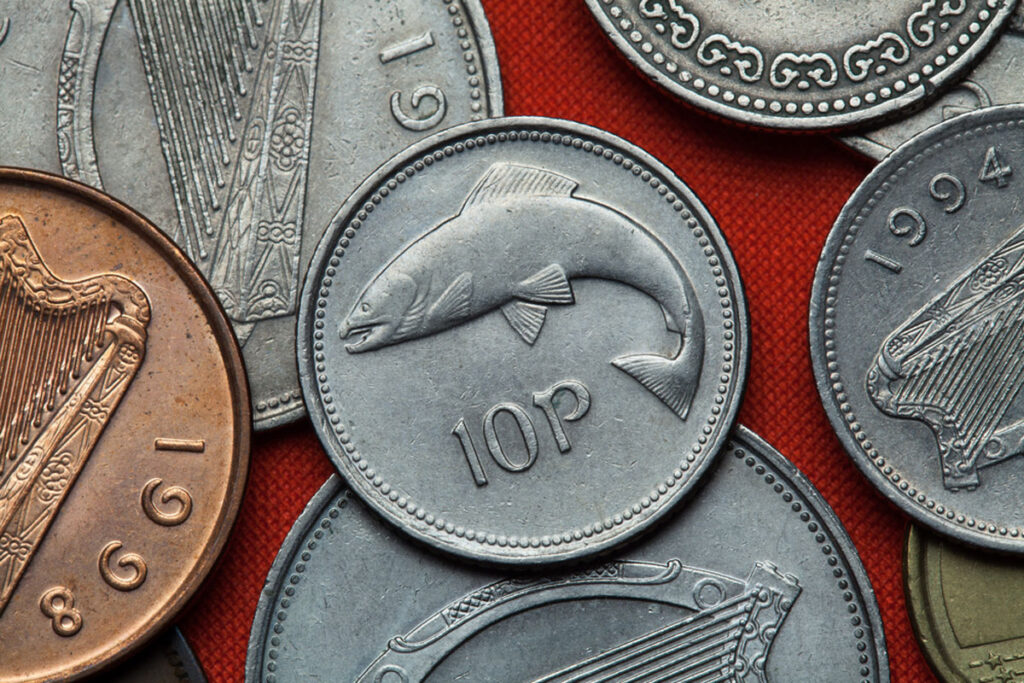
Conservation and Environmental Challenges
Wild salmon populations in Ireland face a myriad of environmental threats that endanger their survival and long-term viability. Overfishing, driven by commercial and recreational interests, has depleted salmon stocks in many of Ireland’s rivers and coastal waters, disrupting natural spawning cycles and reducing genetic diversity. Habitat destruction, resulting from urbanization, agricultural runoff, and dam construction, further compounds the challenges facing wild salmon by degrading essential spawning grounds, migration routes, and nursery habitats. Pollution, including industrial discharge, agricultural runoff, and marine litter, poses additional risks to salmon populations, compromising water quality and ecosystem health.
In response to the environmental challenges facing wild salmon populations, various conservation organizations, government agencies, and community groups in Ireland have launched initiatives to protect and restore salmon habitats and promote sustainable fishing practices. River restoration projects aim to enhance spawning habitat, improve water quality, and restore natural riverine processes to support healthy salmon populations. These projects may involve removing barriers to fish passage, restoring riparian vegetation, and implementing erosion control measures to mitigate habitat degradation.
Furthermore, efforts to reduce overfishing and promote sustainable fishing practices play a crucial role in safeguarding wild salmon populations. Catch-and-release policies, fishing quotas, and seasonal restrictions help regulate fishing pressure and ensure that salmon stocks are harvested at sustainable levels. Additionally, educational campaigns and outreach programs raise awareness about the importance of responsible angling practices and the need to conserve wild salmon for future generations.
Salmon farming, or aquaculture, has emerged as a significant source of salmon production in Ireland, providing a sustainable alternative to wild-caught salmon while helping alleviate pressure on dwindling wild stocks. Salmon farms rear salmon in controlled environments, such as sea cages or land-based tanks, where water quality, temperature, and feeding regimes can be closely monitored and managed. This controlled environment allows for efficient growth rates and reduces the risk of disease transmission and predation compared to open ocean conditions.
However, salmon farming is not without its environmental and ethical concerns. Intensive farming practices can lead to water pollution, habitat degradation, and disease outbreaks, particularly in marine environments where sea cages are used. Escapes of farmed salmon into the wild can also pose genetic and ecological risks to wild populations through competition for resources and interbreeding. Additionally, concerns about fish welfare, including overcrowding, stress, and disease, highlight the need for improved husbandry practices and welfare standards within the aquaculture industry.
In response to these challenges, sustainable aquaculture practices, such as integrated multi-trophic aquaculture (IMTA) and land-based recirculating aquaculture systems (RAS), are being developed to minimize environmental impact and enhance fish welfare. IMTA systems combine the cultivation of multiple species, such as fish, shellfish, and seaweeds, to maximize resource utilization and reduce waste production, while RAS technologies recirculate water and filter waste, minimizing environmental discharge and conserving water resources.
Overall, the conservation and sustainable management of wild salmon populations in Ireland require a multifaceted approach that addresses the complex interactions between environmental, economic, and social factors. By implementing effective conservation measures, promoting sustainable fishing practices, and advancing responsible aquaculture techniques, stakeholders can work together to ensure the long-term health and resilience of Ireland’s iconic salmon populations.
Salmon as a Cultural Ambassador
Salmon holds a unique position as a cultural ambassador for Ireland, embodying the nation’s rich heritage, natural abundance, and culinary excellence. Through its historical significance, culinary versatility, and ecological importance, salmon serves as a powerful symbol of Ireland’s identity and values on the global stage.
Salmon’s connection to Ireland’s natural beauty is deeply ingrained in the country’s cultural narrative. The pristine rivers, lakes, and coastal waters that support wild salmon populations are celebrated as emblematic of Ireland’s unspoiled landscapes and untamed wilderness. The salmon’s annual migration upstream to spawn is a spectacle that draws visitors from around the world, showcasing the breathtaking beauty and ecological diversity of Ireland’s freshwater and marine ecosystems.
In addition to its role as a symbol of natural beauty, salmon is a cornerstone of Ireland’s culinary heritage, celebrated for its exceptional flavor, texture, and nutritional value. From traditional recipes passed down through generations to innovative culinary creations by contemporary chefs, salmon features prominently in Irish cuisine, reflecting the country’s agricultural abundance and coastal bounty. Whether served smoked, poached, grilled, or cured, salmon captivates palates with its delicate flavor and versatility, earning it a place of honor on tables at home and abroad.
Moreover, salmon’s importance extends beyond the dinner plate to encompass Ireland’s commitment to sustainability and environmental stewardship. As a species that relies on clean, healthy habitats for its survival, salmon serves as a barometer of ecosystem health and vitality. Efforts to conserve and restore salmon habitats, promote sustainable fishing practices, and mitigate environmental threats not only safeguard wild salmon populations but also uphold Ireland’s reputation as a leader in environmental conservation and sustainable development.
In summary, salmon’s multifaceted role as a cultural ambassador for Ireland reflects the nation’s deep connection to its natural heritage, culinary traditions, and environmental values. Through its symbolism, versatility, and ecological significance, salmon embodies the essence of Ireland’s identity and serves as a powerful ambassador for the country’s cultural and environmental legacy on the world stage. As Ireland continues to embrace its role as a steward of the land and sea, salmon will undoubtedly remain a cherished emblem of the nation’s spirit and resilience for generations to come.
Try some of our delicious salmon recipes:
IRISH POTATO CAKES WITH SMOKED SALMON
